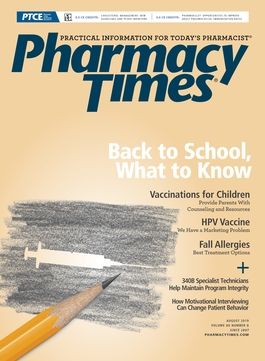Publication
Article
Pharmacy Times
Drug Shortages Raise Critical Safety Concerns
Author(s):
Lack of availability has led to compromised care, potentially harmful errors, and unsafe practices. Here are strategies for coping with the crisis.
Exhaustive accounts of difficulties, frustrations, misspent resources, and safety concerns related to drug shortages continue to come from practitioners who communicate with the Institute for Safe Medication Practices.
Drug shortages are a daily struggle, involving an increasing number of drugs without a viable alternative and lasting longer than in the past. Practitioners suggest that providing appropriate and safe drug therapy has become extremely challenging during shortages and has led to numerous instances of compromised care, potentially harmful errors, and unsafe practices.
Many practitioners note that the state of drug availability in the United States is unacceptable. Some say that inadequate planning during drug company mergers has led to many of the shortages. Others blame the drug manufacturers for limiting supplies to increase demand and bolster profits, noting that products in short supply that return to the market are often costlier than before the shortage. But most practitioners feel that providing high-quality, safe patient care in a fiscally responsible manner is nearly impossible. Other concerns include errors and poor patient outcomes caused by absent or delayed treatment; the lack of advanced warnings about impending shortages; preventable adverse drug events caused by the use of alternative drugs or dosage forms; and the use of less desirable, more expensive, or unfamiliar drugs.
Overall, practitioners convey a real sense of crisis.
RECOMMENDATIONS FOR HEALTH CARE ORGANIZATIONS
Assess inventory of drugs on hand. Count the inventory on hand, and estimate how long the supply will cover needs based on historical usage of the drug.
Talk to patients about drug shortages. Keeping patients up-to-date about drug shortages that affect their drug therapy is important. Inform them of the drug shortage, the causes, and the expected duration. Educate them about any dosing, preparation, administration, storage, and monitoring differences for prescribed alternative products. Discuss error potential with a prescribed product and strategies to reduce risk.
Conduct a failure mode and effects analysis (FMEA) and act. Assess the potential hazard posed to patients and the organization by the shortage. Conduct a mini FMEA to identify potential safety concerns with the use of alternative products. Determine how to best manage the risk of adverse effects and serious errors with alternative drugs, and make any necessary procedural and technological changes to support the safe use of the alternative medications.
Establish a drug shortage network with local health care providers. Build and strengthen local collaborative networks to share information regarding drug shortages and alternative products and, when an alternative is not suitable, to coordinate the transfer of patients to providers or pharmacies that still have a shortage drug available. Include local prescribers and outpatient clinics in these efforts.
Do not hoard drugs. Stockpiling a medication may lead to an artificial shortage in which the drug might otherwise be available in adequate supplies to meet patient needs across the nation.
Engage in ongoing communication with staff members. Using the most effective means possible, regularly share information about the drug shortage, causes, and expected duration; assessment of drug availability; temporary therapeutic guidelines, including use limitations; dosing, preparation, and administration guidelines for alternative products; error potential with alternative products and strategies to reduce risk; and additional patient monitoring and safety steps when using an alternative drug. Brief pharmacy staff members daily regarding all aspects of drug shortages so they can serve as a resource to patients and practitioners.
Find potential therapeutic alternatives early. Employ a formal, standard process for identifying therapeutic alternatives to shortage drugs. Obtain suggestions from listservs, the literature, local pharmacies, prescribers, professional websites, and even local or regional hospitals. Conduct an inventory of the current supply of possible therapeutic alternatives. Contact the prescriber when a patient is unable to obtain the prescribed medication.
Identify drug shortages. Determine the key staff member or members responsible for staying up-to-date on drug shortages. Be alert to signs of a potential impending shortage, such as partially filled orders or specific strengths of drugs that are difficult to obtain. Regularly search the American Society of Health-System Pharmacists (ashp.org/Drug-Shortages) and FDA (www.fda.gov/drugs/drug-safety-and-availability/drug-shortages) websites to learn about drug shortages. Social media, collegial networks and listservs with professional organizations, wholesalers, and purchasing groups may also serve as resources.
Learn more about drug shortages. Once an actual or impending shortage has been identified, call the manufacturer and/or purchasing groups and wholesalers for more details about the shortage, its estimated duration, and directions for ordering drugs.
Prioritize patients, and place limitations on use. Based on the extent of the shortage or the shortage forecast, availability of alternatives, and historical usage, practitioners in ambulatory practices and clinics should develop temporary therapeutic guidelines that tailor the drug’s use to groups of priority patients for whom the alternative drug may be inappropriate. Guidance on management of shortages and use limitations may be available from external organizations, such as the CDC or other government agencies, medical/professional organizations, and specialty groups.
Michael J. Gaunt, PharmD, is a medication safety analyst and the editor of ISMP Medication Safety Alert! Community/Ambulatory Care Edition.







